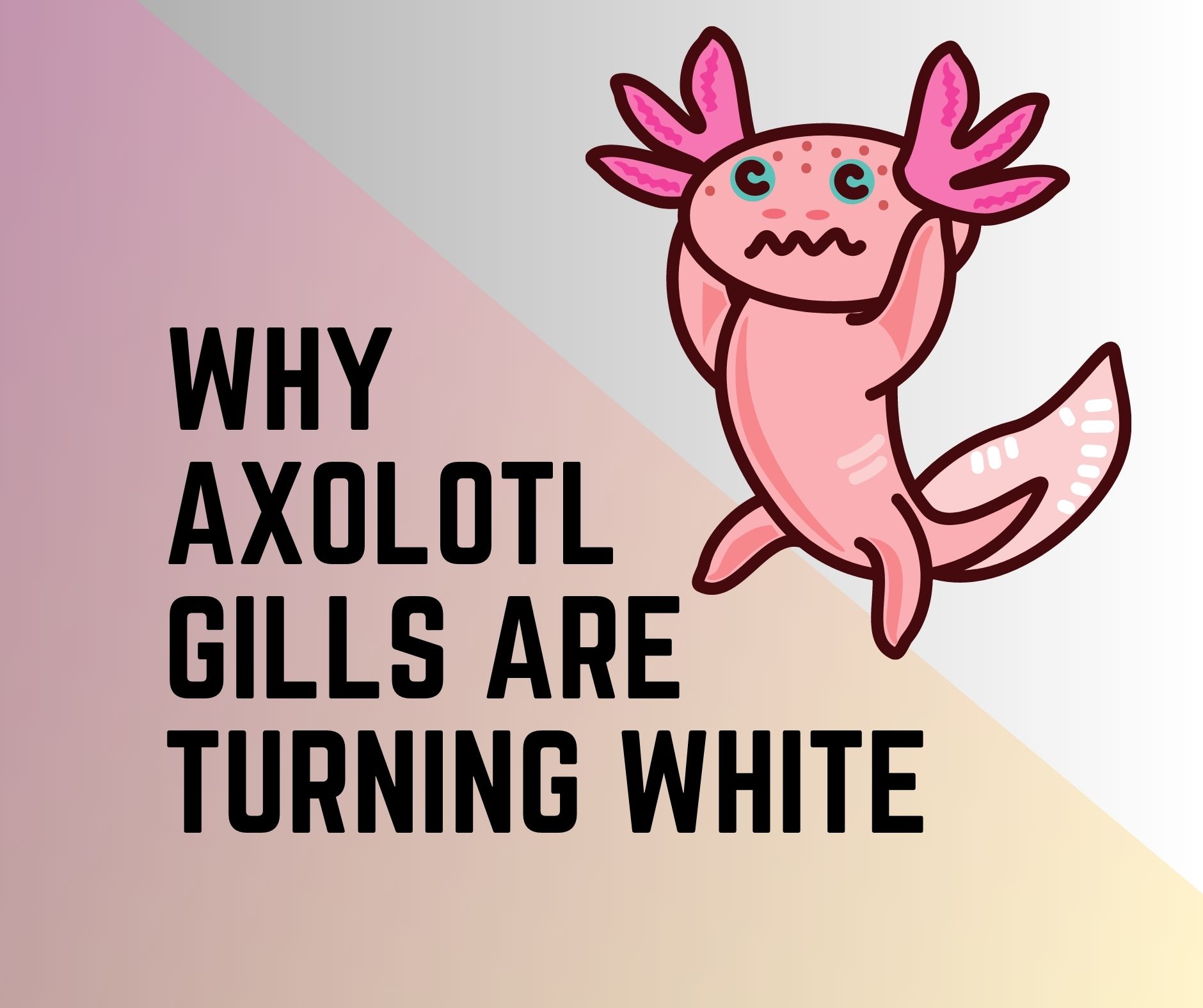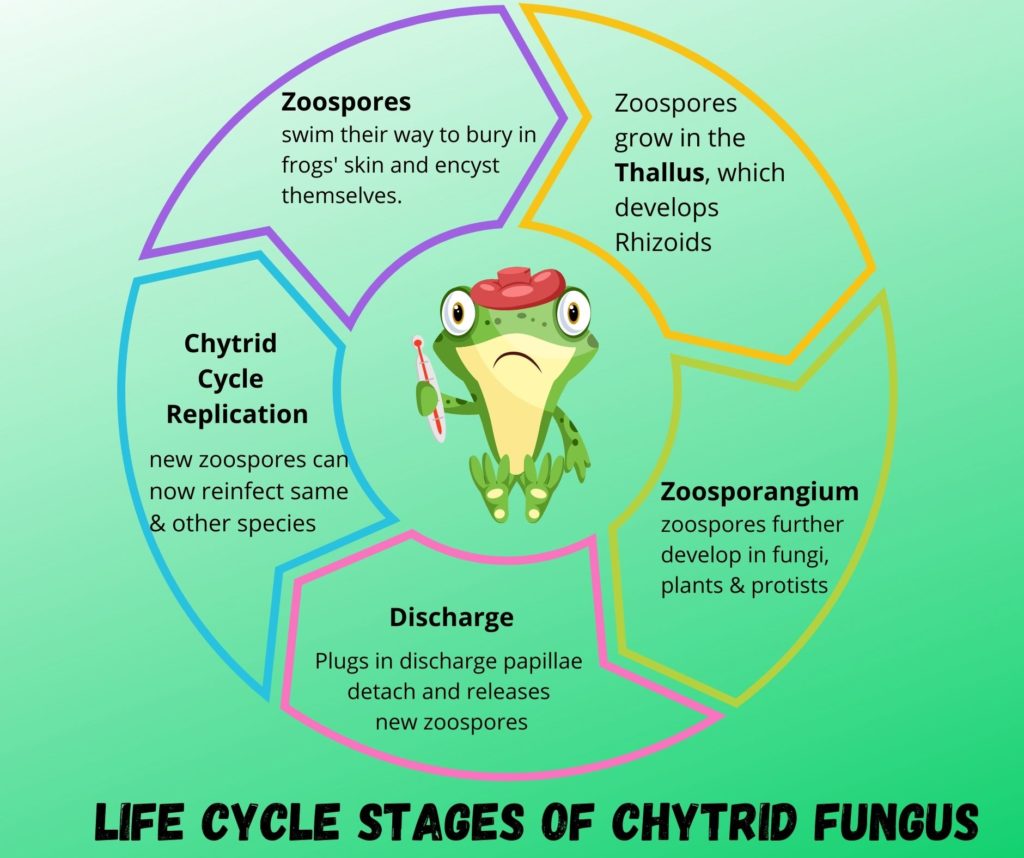
Axolotls may be fewer in number, but their fascinating world is huge and captivating. Known for their extraordinary regenerative abilities, these creatures. However, despite how extraordinary and fascinating Axolotls are, these enigmatic creatures are prone to a range of health issues.
Especially, Axolotls’ delicate gills sometimes undergo an intriguing transformation and turn white. But why does Axolotls’ Gills Turn White? Join us as we learn about this peculiar phenomenon. Moving forward, we will also learn about other diseases that hit Axolotls and remedies for the same.
Why is My Axolotl’s, Gills Turning White?
The gills of Axolotls play a vital role in their effortless respiration underwater. And when their vibrant gills turn into a shade of white, it is a clear indication that something is wrong with Axolotls, and they are suffering. The phenomenon of axolotl gills turning white has surprised both scientists and aquatic enthusiasts at the same time. Axolotls’ gills serve as their primary respiratory organs; even a slight change in them is a matter of concern.
Multiple factors may result in turning Axolotls’ gills white. For instance:
- Stress triggered by poor water quality, sudden pH or temperature change, and improper tank conditions can be one of the reasons. As stress weakens the Axolotl’s immune system, it makes them susceptible to diseases and infections and may turn their gills while.
- Bacterial and fungal infections can invade Axolotl gills resulting in discoloration, tissue damage, and inflammation. These are other potential culprits. Pathogens like Aeromonas, Pseudomonas, or Saprolegnia can enter the gills causing inflammation, tissue damage, and discoloration. Some parasitic infestations, especially the ones caused due to flukes or leeches, can also turn gills white.
Care taker in charge must ensure optimal water parameters along with a clean and well-filtered tank environment to address the process of Axolotls’ gills turning white. In addition, while adding new Axolotls into the Tank, it is important to quarantine them to prevent the introduction of pathogens.
Right upon monitoring gill whitening, prompt action is important. Some treatments may include appropriate medications and other care prescribed by a veterinarian. Understanding the reasons behind axolotl gill whitening will help more while implementing any remedy or treatment.

What do Unhealthy Axolotl Gills Look Like?
Healthy Axolotl gills appear pinkish-red in color and are smooth and feathery. Unhealthy axolotl gills don’t look the same and can exhibit various visual indicators. Learning them that may indicate gill health issues is important. Here are some ques you must focus upon:
- The most common indication of gill problems is the change/ loss of color. If Axolotls’ gills aren’t healthy, they will appear white and pale, losing their vibrant red or pink hue.
- Unhealthy Axolotls’ gills appear swollen, inflamed, and/or reddened gills. Any of these signs are indicative of an underlying issue.
- It isn’t a healthy sign when Axolotls’ gills appear slimy or you observe mucus coating upon them. Such conditions suggest an infection or parasitic infestation.
- Axolotl’s gill with open sores, wounds, or visible lesions is an unhealthy and concerning sign.
- Apart from physical changes, if an axolotl is seen gasping for air at the surface of the Tank, it indicates unhealthy gills. Labored breathing is another sign indicating gill problems.
It is important to pay attention upon noticing any abnormal changes in the gills. Take serious and prompt action and consult a veterinarian for accurate diagnosis and appropriate treatment.

Axolotl Diseases and Remedies
Axolotls need specific care and attention since these amphibians are susceptible to a range of diseases. By understanding their common health concerns, pet owners can work on remedies and provide the required care to them. Here is a list of Diseases that impact Axolotls and remedies for them. Have a look:
Aeromonas or Pseudomonas:
These two common types of bacteria lead to infections in axolotls. Infections like these generate redness, swelling, sores, fin rotting, and more.
Remedies For Aeromonas or Pseudomonas infections in axolotls:
- Right upon noticing the signs of infection, Isolate the affected Axolotl from other tank mates. Doing so will prevent the spread of bacteria and reduce stress.
- Make sure the water parameters in the Tank are optimal. Regular water testing and maintenance are important. Ensure partial water changes, keep ammonia and nitrite levels low, and ensure the temperature is right.
- Consult an aquatic veterinarian for proper diagnosis and specific treatment recommendations. A vet may perform a bacterial culture to determine the exact bacteria involved and thus decide the course of action. Depending on the severity of the infection, antibiotic treatment may be necessary.
- Lastly, while on antibiotics, provide Axololts with clean water conditions and a balanced and nutritious diet.

Chytridiomycosis or chytrid fungus:
This fungal disease is known for affecting amphibians, including axolotls. It is caused by the pathogenic fungus Batrachochytrium dendrobatidis (Bd) and is responsible for the significant population decline of many species. Some of its common symptoms include Skin discoloration or pigmentation, thickened or sloughing skin, loss of appetite, lethargy, and respiratory distress.
Remedies and Treatment of Chytridiomycosis include:
- Bathing the infected Axolotl regularly in an antifungal solution. Doing so will reduce the fungal load.
- Antifungal medications can be used to treat chytridiomycosis under the guidance of a veterinarian.
- Isolating the infected Axolotl and maintaining strict biosecurity measures can prevent the spread of the fungus.
NOTE: Chytridiomycosis is a highly contagious disease. Therefore any Axolotl that is infected axolotls should not be shared with other individuals or released into the wild.
Ammonia Poisoning
Ammonia poisoning is common in Axolotls who aren’t properly cared for. This potentially lethal condition affects axolotls when the ammonia levels in their Tank exceed tolerable limits. Ammonia is basically the toxic waste product excreted by axolotls in the Tank. If not removed, it can prove harmful and cause poisoning. High levels of exposure can lead to respiratory distress, gill damage, stress, weakened immune system, and reduced appetite and growth.
remedies for treating Ammonia Poisoning in Axolotls:
- Perform around 20 to 30% partial water changes daily or as and when necessary. Doing so dilutes the accumulated ammonia and removes it in some time.
- Improve proper filtration or add biological filtration media to enhance ammonia removal.
- Regularly test ammonia, nitrite, and nitrate levels in tank water using appropriate test kits.
- Avoid overfeeding the Axolotls and remove any uneaten food to prevent further ammonia production.
- Increase aeration and water circulation in the Axolotl tank.
Preventing ammonia poisoning is crucial, or it can prove life-threatening for Axolotls. In cases of severe ammonia poisoning, it is advisable to consult with a veterinarian experienced in axolotl care for further guidance.
Hyperthermia
Hyperthermia is a serious condition for axolotls. Since Axolotls are cold-water amphibians, a rise in temperature can cause them stress. It can also lead to physiological imbalances and, in many cases, can potentially turn fatal.
Remedies to manage Hyperthermia in axolotls:
- Upon noticing the signs of Hyperthermia, immediately lower the water temperature of Axolotls’ Tank. Ideally, the water temperature should range between 16 to 18°C. You can either add cool, dechlorinated water or place frozen water bottles in the Tank. However, do not add ice directly to avoid sudden temperature fluctuations.
- Move the Axolotl tank to a cooler area and shield it from direct sunlight.
- Hyperthermic Axolotls may struggle to breathe, thus enhancing aeration and oxygenation in the Tank.
- Regularly monitor water parameters and ensure an appropriate range.
If Axolotl’s condition does not improve or symptoms increase, seek veterinary attention immediately. Also, ensure the optimal temperature in Axolotls’ Tank since preventing Hyperthermia is essential.
Parasite infections:
Parasite infections can afflict axolotls and impact their overall health. Some common parasites that can affect axolotls include leeches, flukes, and protozoans.
Remedies for addressing parasite infections in axolotls:
- Start by identifying the potential parasite and then consult a veterinarian for diagnosis. Follow all the medications as suggested by the Vet.
- Even if you are skeptical of your Axolotl suffering from parasite infection, isolate them immediately. While doing so, make sure that water parameters are optimal in another tank. Once removing the infected Axolotl, clean and disinfect the main Tank and accessories.
Fungus:
Fungal infections can affect axolotls quite commonly. You may observe white or cotton-like growth on their gills, skin, and fins. Upon noticing the same, prompt treatment is important to prevent the spread further.
some remedies to address fungal infections in axolotls:
- Start by isolating the affected Axolotl from its Tank and place it in a separate quarantine tank.
- Improve the water quality in both tanks.
- Start antifungal treatments available as prescribed by the Vet. Aquatic vets commonly prescribe Malachite Green or Potassium Permanganate. Though instead of picking them on your own, consult the Vet for dosage, duration of treatment, and specific medications.
- Clean the Tank and remove any residual fungus and prevent re-contamination.
Saprolegnia:
It is a fungus type that can lead to infections in axolotls. The infection caused by Saprolegnia is known as ‘Cotton wool disease.’ It can lead to significant tissue damage.
Remedies to manage Saprolegnia infections in axolotls:
- Start by isolating the infecting Axolotl from others to prevent fungus spread.
- Improve water quality and keep ammonia and nitrite levels at zero. Please note that poor water quality can contribute to Saprolegnia’s growth. You can change the water as well if required.
- Remove any visible cotton-like growth using a clean, sterilized tool. Be gentle as hassle can spread the fungus all across tank water.
- Give the infected Axolotl Salt Baths using non-iodized aquarium salt (sodium chloride).
- Consult a veterinarian for appropriate antifungal medications.
Please Note: Treating Saprolegnia infections can be challenging, especially since the success rates may vary. It is better to not even avoid a single day or hour since prompt action and veterinary guidance are necessary. Additionally, prevention is key to maintaining optimal water quality.
Gastric and intestinal Issues:
Such issues can occur in axolotls as digestive disturbances or blockages. It can be a result of improper diet, ingestion of indigestible materials, or underlying health issues.
Remedies for gastric and intestinal problems in axolotls:
- Consult a vet or aquatic expert and evaluate your Axolotl diet. Focus on live or frozen foods like earthworms, bloodworms, or brine shrimp. Whereas avoiding large prey items that may lead to impaction. Switch to a more natural diet, especially if your Axolotl is consuming pellets or other processed foods
- Remove any ingested gravel, sand, or indigestible materials from the Axolotl tank.
- Gently palpate Axolotl’s abdomen and try to feel any. Upon noticing any blockage, consult a veterinarian for evaluation and potential removal.
- Ensure appropriate filtration and maintain optimal water quality in the Tank.
- Remember that prevention is the key when it comes to gastric and intestinal issues in axolotls.
Wrapping up…
White axolotl gills may indicate diseases such as fungal or bacterial infections. Consult a veterinarian for accurate diagnosis and appropriate remedies to restore gill health.

Hi, I’m Mike, and I’m the creator of amphibianlife.com. If there was one word to describe it? It would be: passionate about Amphibians! Whether you want to know more about amphibians or have a presentation to give at school, you’ve come to the right place.
